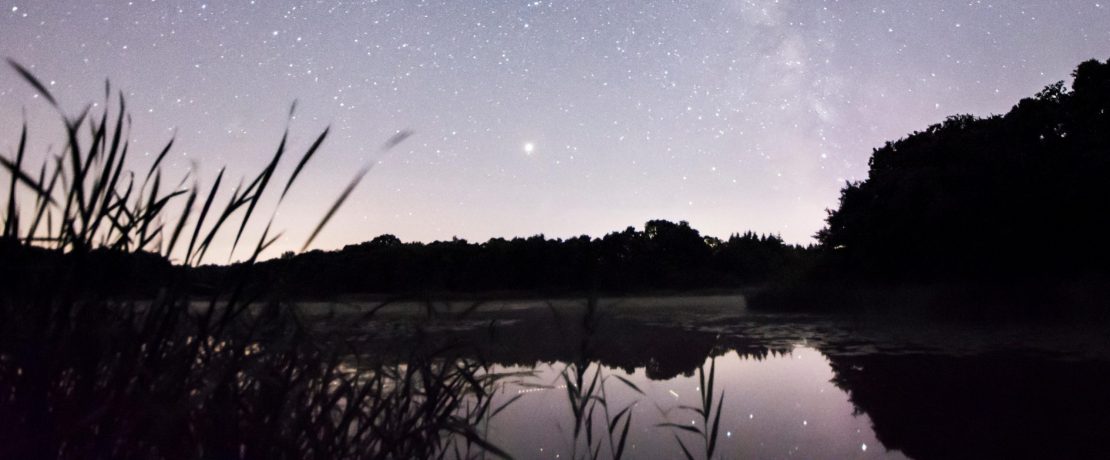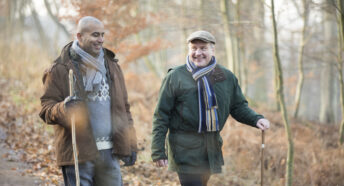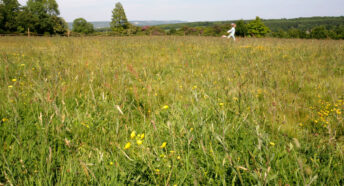A bat’s eye view
Light pollution impacts our view of the night sky but can also have a serious effect on wildlife.
CPRE campaigns to reduce light pollution so we all have a better chance of experiencing the wonder of our starry night skies – an essential experience in the countryside. We’re also concerned about the impact of artificial light on our wildlife and how it affects behaviour. One animal that finds light pollution a serious hazard is the bat.
Here, Joanna Ferguson from the Bat Conservation Trust explains why light pollution is such a big problem for these animals.
There are two main reasons artificial light makes life challenging for the 17 types of bats that breed in the UK: avoiding predators, and finding enough flying insects to eat.

Avoiding predators
We think that bats avoid light as it increases their chance of being caught by birds such as peregrine falcons, which have been seen hunting them in our too well-lit cities.
The severity and type of impact of light pollution depend on where the light is falling, the species of bat and the kind of lighting involved. For example, all bats are vulnerable when they are emerging from their roosting sites, the places where they spend the daytime.
A light at a bat roost entrance can not only cause disturbance to the extent that the roost is abandoned, but that bats may also become trapped within it as they’re unsure when the night is falling and therefore when it is safe enough for them to go out and feed. Lighting a roost is an offence under the laws that fully protect all UK bats.
Away from the roost, the threat of being caught by predators is more of an issue for the slower flying species, such as long-eared bats.
The amount of illumination produced from a light source is measured in ‘lux’. Good main road lighting ranges between 5 – 20 lux. Bats will avoid areas where there’s as low an illuminance level as 3.6 lux. To put this into context, a clear fully moonlight night is no more than 1 lux! However, even fast-flying bats like common pipistrelles that opportunistically feed in lit conditions where insects gather have been observed avoiding lit gaps in vegetation in our cities.
Finding food
Apart from the location and intensity, the colour of the light being used is also important. Many night-flying insects are attracted to light, especially those light sources that emit an ultraviolet component or have a high blue content. This means that there is a potential double impact on our slower flying bats. They’re unable to hunt for food such as moths in the light and at the same time, the insects they’re looking for are attracted away from darker areas where they normally feed, through what is known as a ‘vacuum effect’!
Even where fast-flying bats are seen feeding at lights, it is likely they do this at a risk to themselves. They’re in danger of being eaten by predators and in higher competition with other fast-flying bats feeding in the area.
Starting to understand these impacts, and therefore what we can do to mitigate them, led to the Bat Conservation Trust in partnership with the Institution of Lighting Professionals and Clarkson and Woods ecological consultants publishing ‘Bats and Artificial Lighting in the UK’ in September 2018.
The types of mitigating behaviour the guidance presents to help bats include:
- only using light where absolutely necessary
- avoiding light spill to keep habitats suitable for bats in darkness (such as hedgerows, woodland and waterways)
- where light is required, only having it on when people need it (for instance using triggered or dimmed solutions), and
- using warm white LEDs.
This best practice guidance is an important step in raising awareness of the negative impacts of artificial lighting and how we can all do our bit to avoid or reduce them. Do take a look and see how you can make life easier for your local bat population.
Read the ‘Bats and Artificial Lighting in the UK’ guidance.
Find out more about CPRE’s campaigning for starry skies.









